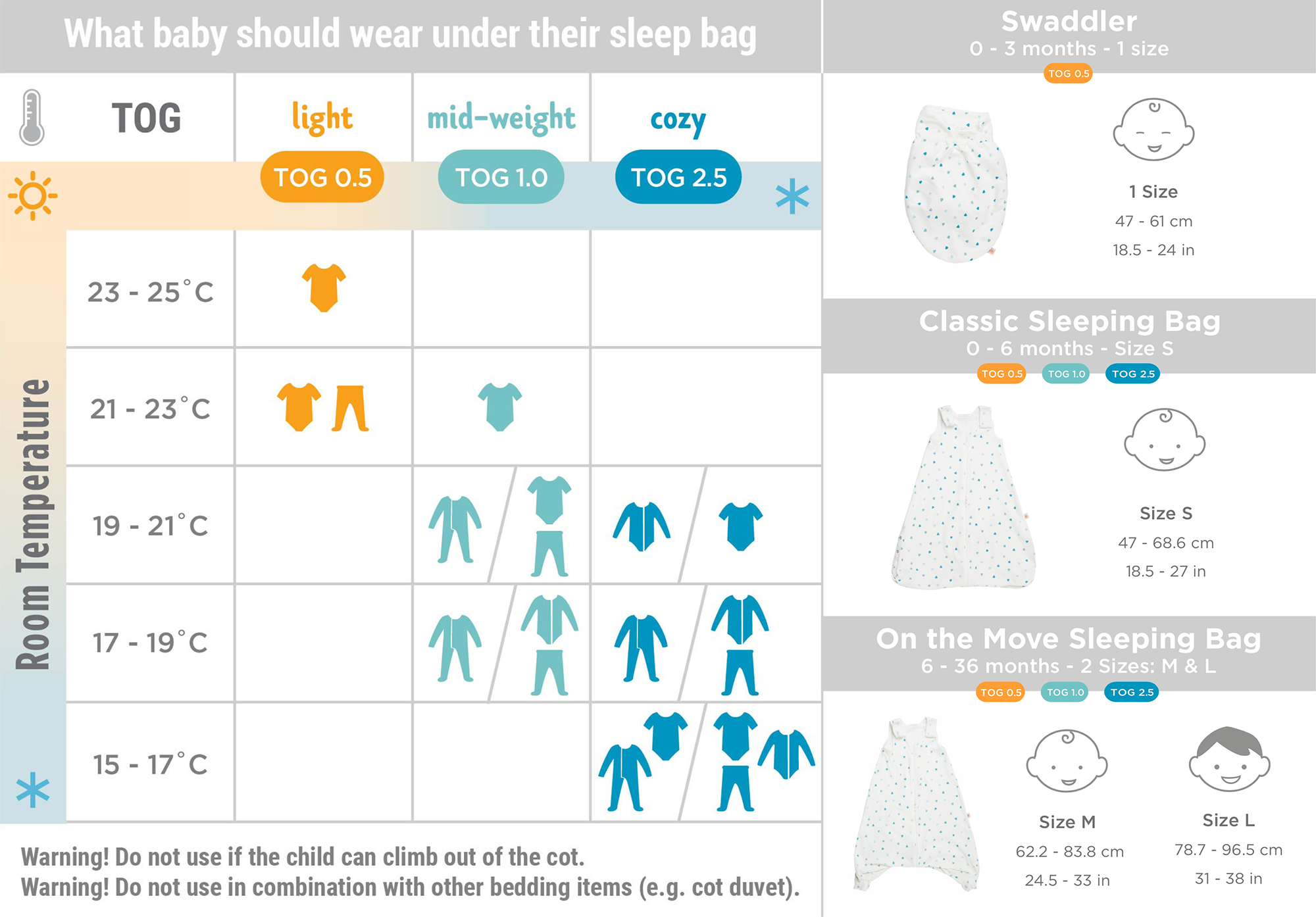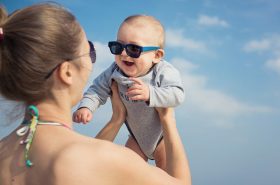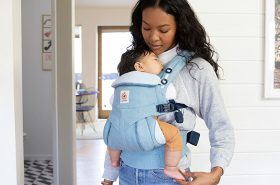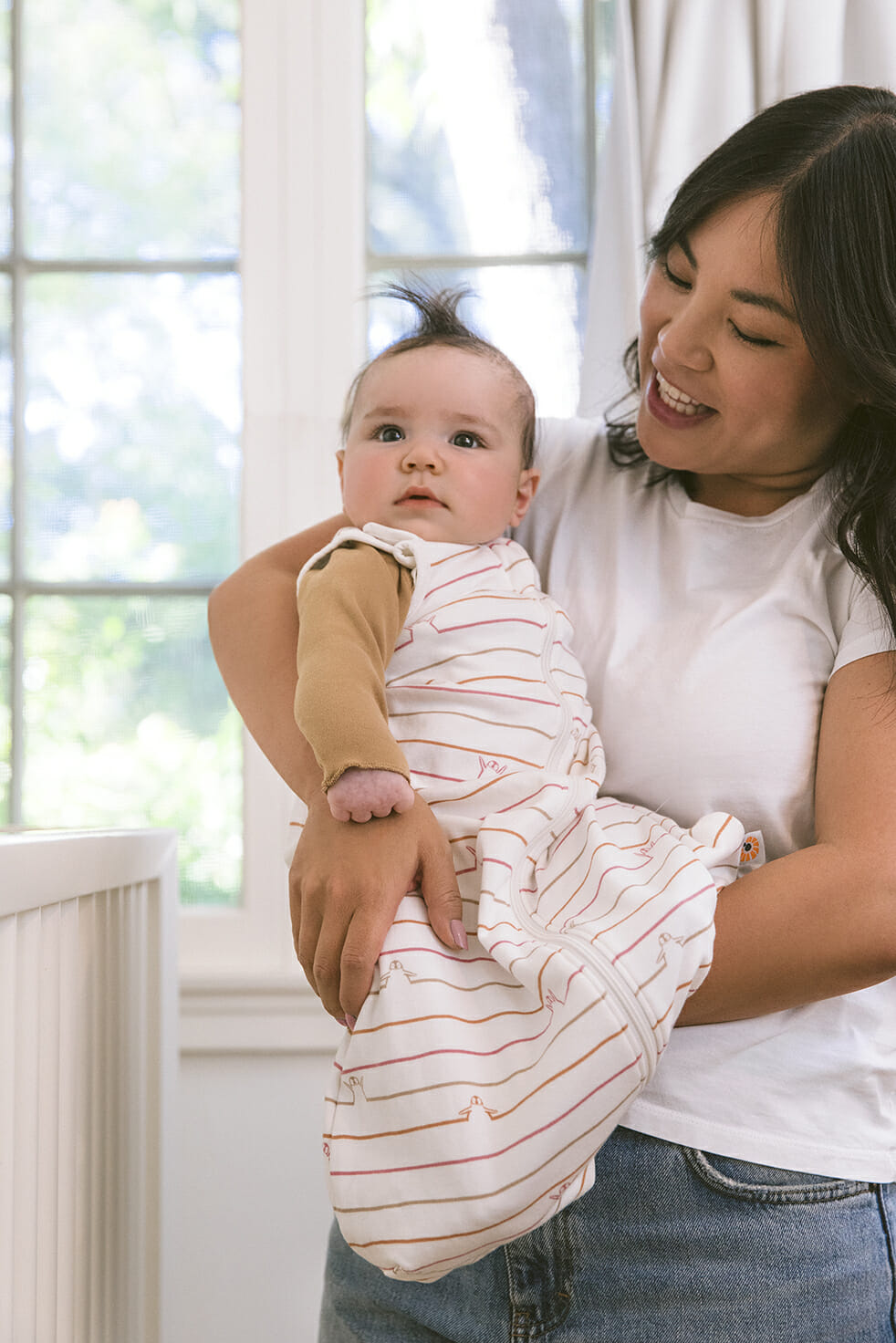
A Sleep Consultant’s Best Sleep Aid? A Sleeping Bag!
We caught up with Gemma Coe, The Baby and Child Sleep Specialist to chat about how sleeping bags can help you all get a better night’s sleep…
My best sleep aid as a sleep consultant? Sleeping bag. Absolutely! Given all the sleep products out there for newborns upwards you may think I’m mad (or just slightly boring). Hear me out. OK, so not only do these ‘wearable blankets’ look totally cute, but they are great for many practical reasons too.
To ensure safe sleep, the NHS and the Lullaby Trust recommend a room temperature of between 16-20 degrees. We also need to ensure the cot is kept completely clear of any loose bedding and other items.
Sleeping bags (or sleep sacks) are not designed to be used with any additional outer layers such as blankets, duvets etc. which ticks all the boxes above. They’re also designed with seasons in mind to make sure our kiddies stay the perfect temperature all night long. They won’t wake hot and sweaty, nor feel icy cold. You can also adapt the type of bag to suit your home, for example if it’s naturally cold and drafty or really hot at certain times of the year, or if you’re traveling to a different climate. Unlike a traditional blanket set up, by using a sleeping bag, your little one will remain tangle free and importantly their head will remain uncovered.
A common reason for children waking at night is because they’re cold. I speak with well meaning parents who have ‘promoted’ their little one to a toddler duvet and pillow set a little too early. Toddlers can find it hard to replace a duvet that has fallen off during the night as they don’t yet have the awareness and dexterity to replace it easily. As a result, they may wake up cold and call out, needing your help to tuck back in. Don’t worry, it’s never too late to go back to a bag! Sleeping bags can go all the way up to the age of 3, so they can transition out of the bag to a toddler duvet set when they’re developmentally able to replace it alone.
Got an active one? Another pro of a sleeping bag is it limits the child’s movement. Only slightly, it’s not a straight jacket! They can still move freely in the bag, helping to roll and settle into a comfortable position, but they won’t be able to hoist their leg up onto the cot side. This helps stop the little ninja wannabes from being able to climb (or fall!) out of their cot. This helps children remain in their cot until they’re ready to transition into a toddler bed, and have the impulse control not to keep getting out!
Check the sleeping bag is suitable for your baby’s age and weight. Luckily Ergobaby Sleeping Bags are suitable for newborns whereas some will start from when the baby is 4kg upwards. Your newborn may be quite happy in a bag straight away or you may choose to swaddle for the first weeks. Families find themselves transferring from a swaddle to sleeping bag around the 3-4 month mark or when their baby first shows signs of rolling. This transition often goes easier than expected but if your baby is struggling then try the bag instead of swaddle for the first part of their night sleep – it’s when they’re likely to be at their most tired and less likely to object! Like with any change to habits and routines at this age, practice makes perfect. The more opportunities they’re given to experience something new, the less unusual it starts to feel and the greater the acceptance.
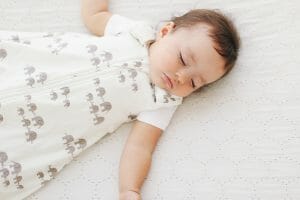
You’ll often see sleeping bags listed by thickness or by tog rating.The tog rating simply determines the material’s thickness. The higher the tog, the thicker the bag. The most commonly used sleeping bags in the UK are 2.5 and 1.0 tog. Ergobaby have simply named their bags light, mid-weight and cozy! If you’re managing to escape to hotter climates you can opt for the light bag (0.5 tog) or mid-weight (1 tog) and for autumn/winter nights the cozy bag (2.5 tog).
As well as paying attention to the tog or weight of the bag, you also need to ensure it’s the right fit so it is snug around the arms and fits neatly around the neck. This helps ensure it doesn’t slip over the baby’s head, or their arms don’t go inside when they’re wriggling at night. Ergobaby Sleeping Bags are adjustable to grow with baby.
Refer to the temperature in the room as you get your little one ready for their nap or bedtime, there are handy infographics to determine the optimum clothing combo for the room temperature (see image below). You can then decide whether to add a vest to the sleep suit under their sleeping bag.
Yes they’re practical, but they are also a lovely sleep cue at nap and bedtime, helping babies and toddlers understand that they’ll soon be placed down in their cot for sleep. The very act of a change into pajamas and sleeping bag is in itself an important part of the bedtime routine. It’s predictable and they know what’s coming next – there’s no surprises. When you travel you can also take them with you, they then act as a constant during unpredictability and change. This can help provide a reassuring aspect and familiar smells to bedtime in a new and unknown environment.
Look out for some of the thoughtful practicalities with different manufacturers too. They’re not made equal! The Ergobaby Sleeping Bags are designed to be both beautiful and super practical too. They unzip from the bottom, so if your little one is still having nappy changes at night you can do this fuss free. They’re also perfect for travel and late trips home, having a slot in the back that you can feed the car seat harness through – transfers from car to cot are made much easier. For babies who will be on the move prior to nap time you can even get sleeping bags with holes for their feet.
Just need to find myself an adult size bag!
For more great sleep information and advice make sure you’re following Gemma’s blog on Facebook and Instagram.
And CLICK HERE to shop Ergobaby’s sleep range.
